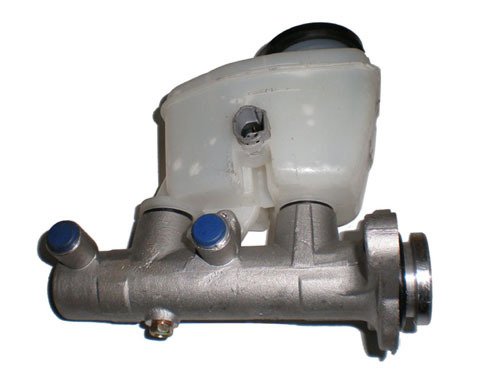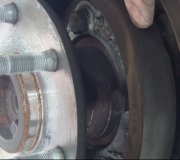There are only two possibilities with that vacuum hose. It has a leak or it does not. If it has a leak, idle speed will be too high. If there is no leak, (including the booster's diaphragm), idle speed will be unaffected.
There are two other things to consider with a low brake pedal. The most common cause, other than air, is rear drum shoes that are not fully adjusted up. The next is the push rod coming out of the power booster. Chrysler did not have much trouble with that, but it does not hurt to check if it is adjustable with a threaded section on the tip. If there are some production tolerances in those parts, the push rod may be adjusted too short.
A less-likely problem to look at is to be sure the brake pedal is coming back all the way. If it does not, the lip seals in the master cylinder cannot take a new "bite" of brake fluid.
Be aware too that on some vehicles, what you think is a low brake pedal equates to the wheels are locked up and skidding on the road. This is especially common on GM vehicles. The brake pedal is fine, and the vehicle stops normally, but after that, it is real easy to keep pushing the pedal all the way to the floor. You have to drive those vehicles to know if the pedal travel is okay.
I do not know if these were used that far back but newer trucks and minivans use a height-sensing proportioning valve at the rear axle, for the rear brakes. It reduces brake fluid pressure to the rear when the vehicle is lightly-loaded, to reduce rear-wheel lock-up. If the vehicle is on a hoist, or supported with jack stands under the frame, the axle will hang down and mimic that light load. The proportioning valve may restrict fluid flow enough that the air in that line cannot be expelled.
A tricky one to find is a piston sticking in a caliper. The square-cut seal is supposed to stick to the piston, and bend slightly when the brakes are applied. When the brakes are released, that seal straightens out, and that retracts the piston a very slight amount so the brake does not drag. As the pads wear, the piston moves out further than the seal can bend, so it slides out through that seal. That is the self-adjusting feature of all disc brakes. If there is rust or dirt on the piston, or the chrome plating has lifted, the piston may fail to slide out and self-adjust. The seal will bend more than normal, then retract the piston too much. Next time the brake pedal is pressed, the piston has too far to travel, and the pedal goes too far to the floor.
The same thing can happen with loose front wheel bearings, but that will only cause a repeated low brake pedal after driving on the road. Road shock causes the rotor to wobble, and that pushes the piston back into the caliper too far. At the next pedal application, it goes too far again to push the piston back out. The clue to that is it only occurs after driving down the road, not when sitting in the shop.
To identify a sticking piston, use a flat-blade screwdriver to reach through the top of the caliper housing, and pry the piston back in. You should be able to do that rather easily with one hand. Next, watch that it slides back out smoothly when a helper works the brake pedal. This is how I always retract pistons when installing new pads. Some books show using a C-clamp to push the piston back in. That should never be necessary. A strong person can even run a piston in by hand. If the C-clamp is the only way to retract the piston, replace the caliper or rebuild it. We used to rebuild all calipers as part of a regular brake job, but today they do not cause much trouble. Many professionally-rebuilt calipers today are less expensive than the cost of replacing a piston with rust spots on it.
Sunday, March 5th, 2017 AT 5:13 PM


